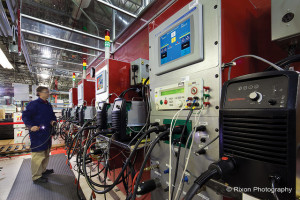How Building Reliability Into The Equipment Design Will Dramatically Improve Your Profitability
 Often time’s equipment is procured, setup and put into operation with a single focus on reducing the initial capital expenditure. This can be a fatal mistake as the reliability of the equipment is built into the design of the equipment. This called the inherent reliability. Once the equipment is designed and installed, there is little the maintenance department can do to improve the inherent reliability.
Often time’s equipment is procured, setup and put into operation with a single focus on reducing the initial capital expenditure. This can be a fatal mistake as the reliability of the equipment is built into the design of the equipment. This called the inherent reliability. Once the equipment is designed and installed, there is little the maintenance department can do to improve the inherent reliability.
With the inherent reliability low, the business struggles to meet its production goals, and either buys more equipment to make up for the poor performance, or loses out on the profits it was expecting. Both of these can lead to a business or site losing out on potential production opportunities or worse.
This is the first of 5 posts on the topic of designing Equipment reliability, with Fred Schenkelberg from FMS Reliability. Over the course of the 5 posts, we will be discussing how to improve the reliability of the equipment and reduce the total cost of ownership or life cycle costs
How Much Can The Design Affect Reliability?
According to Ramesh Gulati, it has been found that as much 60% of failures and safety issues can be prevented by changes in the design. Imagine how much more production could be achieved with a 60% reduction in failures!
Maintenance is the function of preserving the capability of the equipment, not to improve it. So the best maintenance can typically do, is achieve the level of inherent performance in the equipment design.
How Much Can The Design Affect Costs?
The design of the equipment has a huge impact on the cost to engineer, purchase, operate and maintain the equipment. The cost to operate and maintain equipment can account for 80% of the total life cycle costs.
According to Assurance Technologies Principles and Practices by Raheja and Allocco, where the costs are spent and the impact on the Life Cycle Costs varies significantly. A well-engineered piece of equipment will cost more upfront, but cost significantly less in the long run as shown below.
In Department of Defense programs, the costs are typically;
- Design and Development 10 – 20%
- Production / Fabrication / Installation 20 – 30%
- Operations and Maintenance 50 – 70%
- Disposal < 5%
In Industry, there is less spend in the design and development, which drives up the operation and maintenance costs.
- Design and Development 5 – 10%
- Production / Fabrication / Installation 10 – 20%
- Operations and Maintenance 65 – 85%
- Disposal < 5%
Considering that approx. 80% of the cost is in O&M, think about how nice it would be to reduce your O&M costs by 15%
How Does a Business Ensure High Inherent Reliability?
A business can design, develop and buy equipment with high inherent reliability, provided they make the effort to do so. Some of the ways that a business achieves this are;
- They use good engineering practices. This includes having and using standards, specifying maintainability and reliability specifications in the design spec. and finally designing with reliability and maintainability in mind.
- They use Human Factor Engineering to eliminate the human errors
- They analyze the design with a FMEA and make improvements in the design stage to lower the operating and maintenance costs.
Do you use any of the tools or standards mentioned above to improve the reliability of your equipment? Why not?
In the next post, Fred Schenkelberg will discuss the how analyzing the design with an FMEA can improve the inherent reliability of the design, and deliver benefits to your organization.
Remember, to find success, you must first solve the problem, then achieve the implementation of the solution, and finally sustain winning results.
I’m James Kovacevic
HIGH PERFORMANCE RELIABILITY
Solve, Achieve, Sustain
Follow @HPReliability
—
The other articles in the series include:
Post 1 – Incorporating Reliability into Your Future
Post 2 – Using a Design FMEA
Post 3 – Where Does Maintenance Fit Into Reliability?
Post 4 – Life Cycle Costs
Post 5 – Close with Q&A
—
Reference
Maintenance & Reliability Best Practices by Ramesh Gulati
 Ask a question or send along a comment.
Please login to view and use the contact form.
Ask a question or send along a comment.
Please login to view and use the contact form.
Leave a Reply